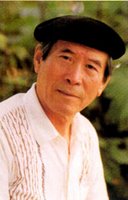 Regular readers will recall my fulminating about works that have been re-translated and re-translated and one of the examples I frequently use in lecture is Hwang Sun-won’s (an excellent writer in translation, in general) Sonagi.
Regular readers will recall my fulminating about works that have been re-translated and re-translated and one of the examples I frequently use in lecture is Hwang Sun-won’s (an excellent writer in translation, in general) Sonagi.
However, as I’m sorting through an appallingly large set of abstracts to edit, I come across this (Attentive readers will note that the author here works at the finest university in Seoul!^^):
Translatability of Style of Hwang Soon-won’s Novels: Focusing on “Shower”
Han, Mi-ae
(Dongguk University_Seoul)The purpose of this study is to explore the translatability of the style of “Shower”. For this, the source text is compared and analyzed to three versions of target texts. The characteristics of style in “Shower” are the one-sentence paragraph, the present-past tense combination, a sentence fragment, and repetition. Paragraphs consisting of one sentence create transition effect and a vivid image of the story. The present tense used in the narration of events set in the past provides sentences with vividness and promptness. Sentence fragment and repetition convey the stylistic effects of interest and emphasis.
Among the author’s artistic devices, sentence fragments are not mostly reflected in target texts and the tense combination is never reflected in TT1 and TT2 while done in TT3 for the most part. These two devices are not culture-specific and are commonly used both in Korean and in American literature. The tense combination is seen as historical present (dramatic present), and a fragment sentence is an incomplete sentence as a stylistic fragment and a kind of deviance. Therefore, the four artistic techniques should be reflected in the target text. Style is not a social concept, but the individual characteristics of an author. When the style of the source text is not translated, a translated text can be “a beauty without personality”.
In these cases of translation it sounds like the style of the original work has been neutered in translation, and this flat style was on of the things I found most objectionable about this story. Could this actually be one of those oft-translated pieces that deserves a new translation?
If you want to read the awesome Brother Anthony’s translation, you can look here.. It seems to feature many of the aspects that the abstract claims are left out, most certainly the tense shifts.. Brother Anthony does not seem to use sentence fragments, rather he routinely uses incredibly brief sentences to ape fragments. I wonder if this one one of the versions inspected in the paper?


